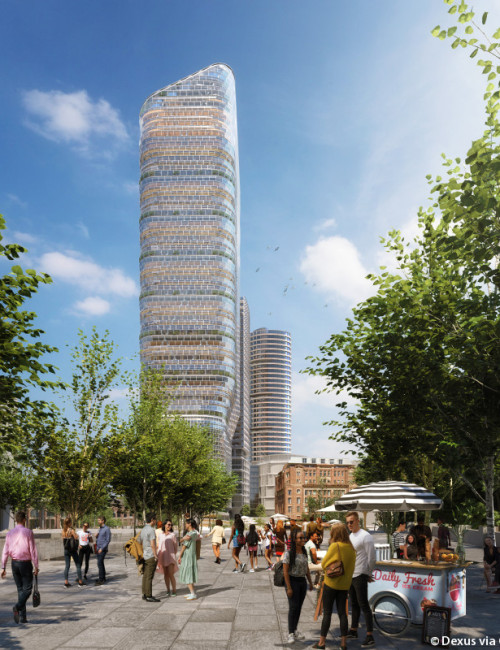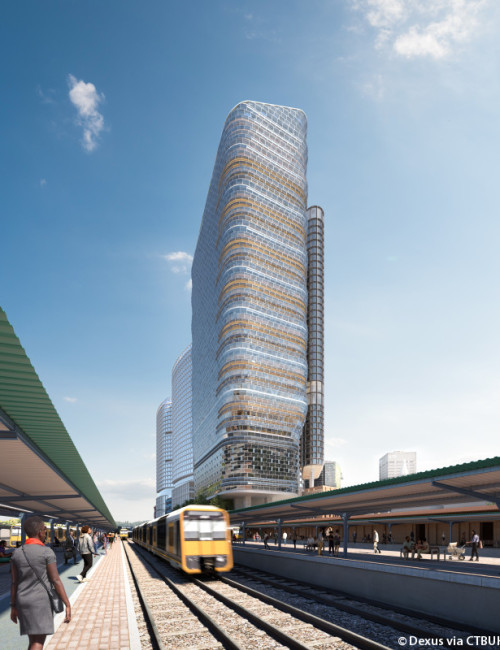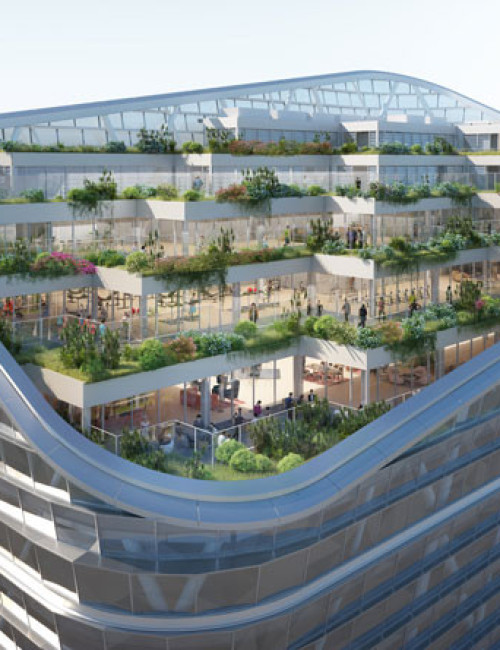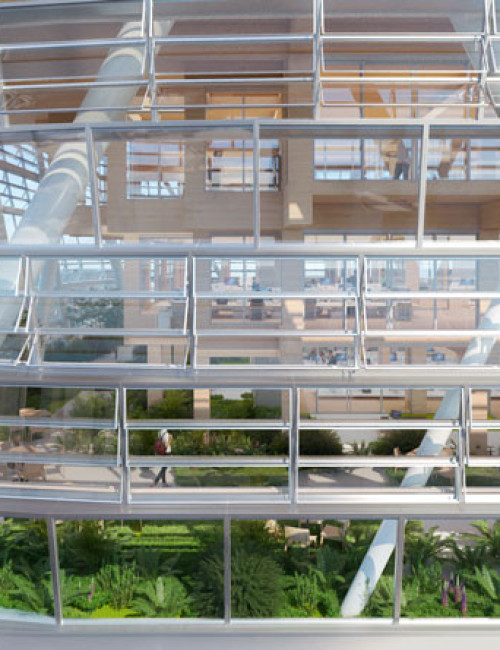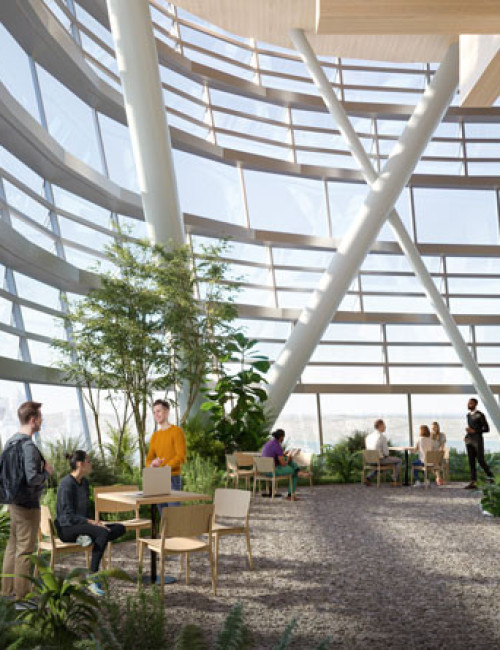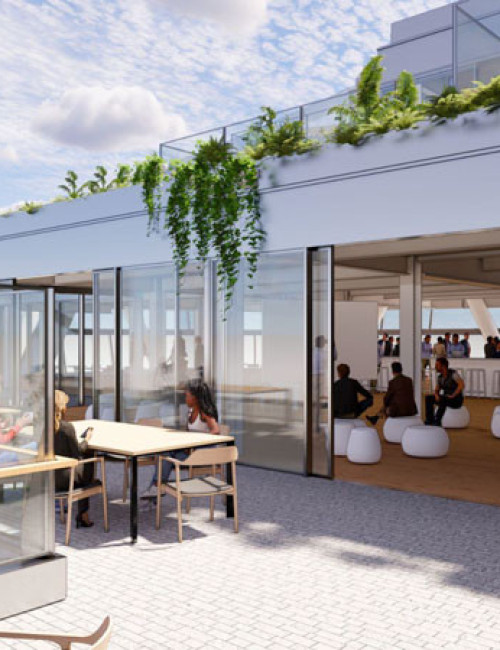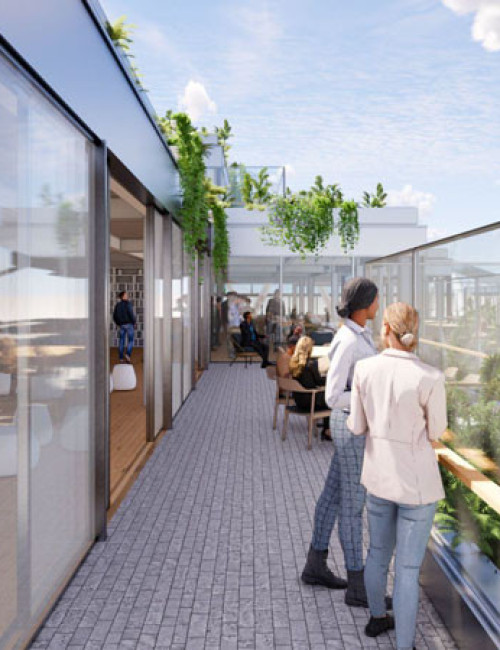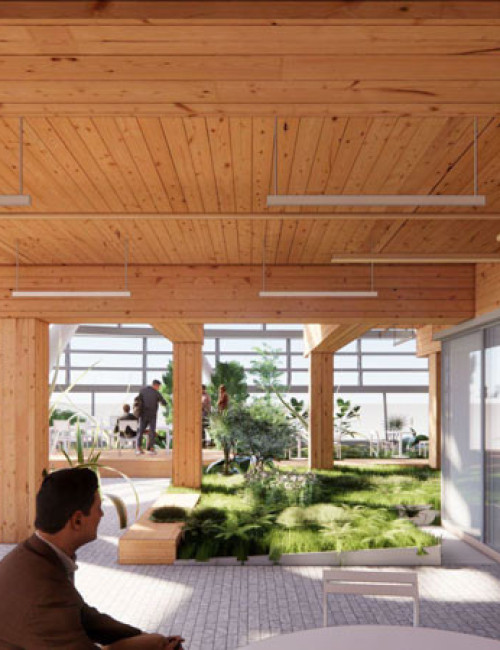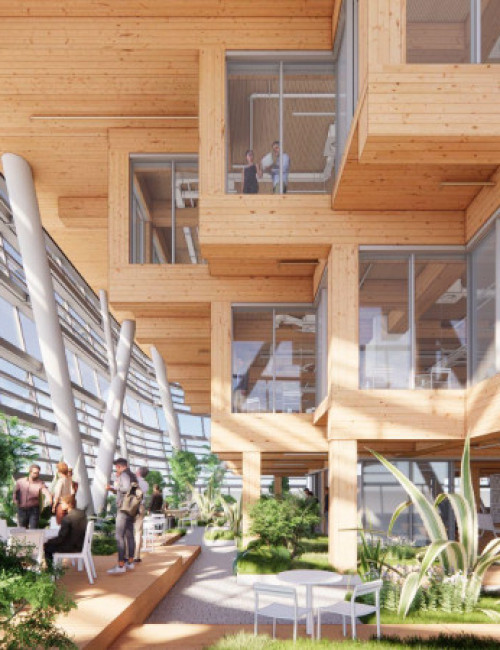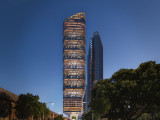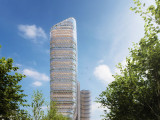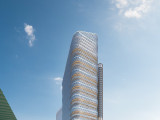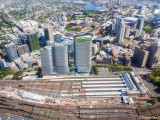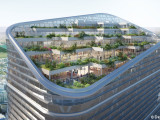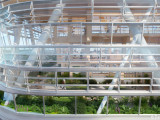Atlassian Central
Sydney
Note: As this project is under construction, the data is based on the most reliable information currently available. This data is thus subject to change until the building has completed and all information can be confirmed and ratified by the CTBUH.
Official Name
Atlassian Central
Other Names
Atlassian Global Headquarters, Railway Square YHA, Western Gateway Block A, Central Place Sydney Block A
Name of Complex
Type
Building
Status
Under Construction
Expected Completion
2026
Country
City
Address
Function
A mixed-use tall building contains two or more functions (or uses), where each of the functions occupy a significant proportion of the tower's total space. Support areas such as car parks and mechanical plant space do not constitute mixed-use functions. Functions are denoted on CTBUH "Tallest Building" lists in descending order, e.g., "hotel/office" indicates hotel function above office function.
Office / Hotel
Structural Material
Both the main vertical/lateral structural elements and the floor spanning systems are constructed from steel. Note that a building of steel construction with a floor system of concrete planks or concrete slab on top of steel beams is still considered an “all-steel” structure as the concrete elements are not acting as the primary structure.
All-Concrete
Both the main vertical/lateral structural elements and the floor spanning systems are constructed from concrete which has been cast in place and utilizes steel reinforcement bars and/or steel reinforced concrete which has been precast as individual components and assembled together on-site.
All-Timber
Both the main vertical/lateral structural elements and the floor spanning systems are constructed from timber. An all-timber structure may include the use of localized non-timber connections between timber elements. Note that a building of timber construction with a floor system of concrete planks or concrete slab on top of timber beams is still considered an “all-timber” structure as the concrete elements are not acting as the primary structure.
Mixed-Structure
Utilizes distinct systems (e.g. all-steel, all-concrete, all-timber), one on top of the other. For example, a Steel Over Concrete indicates an all-steel structural system located on top of an all-concrete structural system, with the opposite true of Concrete Over Steel.
Composite
A combination of materials (e.g. steel, concrete, timber) are used together in the main structural elements. Examples include buildings which utilize: steel columns with a floor system of reinforced concrete beams; a steel frame system with a concrete core; concrete-encased steel columns; concrete-filled steel tubes; etc. Where known, the CTBUH database breaks out the materials used within a composite building’s primary structural elements.
Concrete-Steel-Timber Composite
Energy Label
5.5 Star NABERS Energy targeted, 6 Star Green Star targeted, Platinum WELL targeted
Height
182.6 m / 599 ft
Floors Above Ground
42
Floors Below Ground
2
# of Elevators
16
Structural Details:
Construction Schedule
Proposed
Construction Start
Completed
Owner
Developer
Architect
Usually involved in the front end design, with a "typical" condition being that of a leadership role through either Schematic Design or Design Development, and then a monitoring role through the CD and CA phases.
Structural Engineer
The Design Engineer is usually involved in the front end design, typically taking the leadership role in the Schematic Design and Design Development, and then a monitoring role through the CD and CA phases.
The Engineer of Record takes the balance of the engineering effort not executed by the “Design Engineer,” typically responsible for construction documents, conforming to local codes, etc.
MEP Engineer
The Design Engineer is usually involved in the front end design, typically taking the leadership role in the Schematic Design and Design Development, and then a monitoring role through the CD and CA phases.
Project Manager
The CTBUH lists a project manager when a specific firm has been commissioned to oversee this aspect of a tall building’s design/construction. When the project management efforts are handled by the developer, main contract, or architect, this field will be omitted.
The CTBUH lists a project manager when a specific firm has been commissioned to oversee this aspect of a tall building’s design/construction. When the project management efforts are handled by the developer, main contract, or architect, this field will be omitted.
Other Consultant
Other Consultant refers to other organizations which provided significant consultation services for a building project (e.g. wind consultants, environmental consultants, fire and life safety consultants, etc).
Other Consultant refers to other organizations which provided significant consultation services for a building project (e.g. wind consultants, environmental consultants, fire and life safety consultants, etc).
These are firms that consult on the design of a building's façade. May often be referred to as "Cladding," "Envelope," "Exterior Wall," or "Curtain Wall" Consultant, however, for consistency CTBUH uses the term "Façade Consultant" exclusively.
Material Supplier
Material Supplier refers to organizations which supplied significant systems/materials for a building project (e.g. elevator suppliers, facade suppliers, etc).
Material Supplier refers to organizations which supplied significant systems/materials for a building project (e.g. elevator suppliers, facade suppliers, etc).
You must be a CTBUH Member to view this resource.
Owner
Atlassian; Dexus Property Group; RailCorp; TOGA Group; YHA Australia
Developer
Occupier/Tenant
Afterpay; Atlassian; Canva; ROKT; Safety Culture
Architect
Usually involved in the front end design, with a "typical" condition being that of a leadership role through either Schematic Design or Design Development, and then a monitoring role through the CD and CA phases.
Structural Engineer
The Design Engineer is usually involved in the front end design, typically taking the leadership role in the Schematic Design and Design Development, and then a monitoring role through the CD and CA phases.
The Engineer of Record takes the balance of the engineering effort not executed by the “Design Engineer,” typically responsible for construction documents, conforming to local codes, etc.
MEP Engineer
The Design Engineer is usually involved in the front end design, typically taking the leadership role in the Schematic Design and Design Development, and then a monitoring role through the CD and CA phases.
LCI Australia Pty Ltd.; Stantec Ltd.
Project Manager
The CTBUH lists a project manager when a specific firm has been commissioned to oversee this aspect of a tall building’s design/construction. When the project management efforts are handled by the developer, main contract, or architect, this field will be omitted.
The CTBUH lists a project manager when a specific firm has been commissioned to oversee this aspect of a tall building’s design/construction. When the project management efforts are handled by the developer, main contract, or architect, this field will be omitted.
Avenor; Generate Property Group
Contractor
The main contractor is the supervisory contractor of all construction work on a project, management of sub-contractors and vendors, etc. May be referred to as "Construction Manager," however, for consistency CTBUH uses the term "Main Contractor" exclusively.
Built Holdings Pty Ltd.; Obayashi Corporation
Other Consultant
Other Consultant refers to other organizations which provided significant consultation services for a building project (e.g. wind consultants, environmental consultants, fire and life safety consultants, etc).
Other Consultant refers to other organizations which provided significant consultation services for a building project (e.g. wind consultants, environmental consultants, fire and life safety consultants, etc).
Avenor
Stantec Ltd.
Blackett Maguire + Goldsmith
These are firms that consult on the design of a building's façade. May often be referred to as "Cladding," "Envelope," "Exterior Wall," or "Curtain Wall" Consultant, however, for consistency CTBUH uses the term "Façade Consultant" exclusively.
ISP Design
Urbis Pty Ltd
Material Supplier
Material Supplier refers to organizations which supplied significant systems/materials for a building project (e.g. elevator suppliers, facade suppliers, etc).
Material Supplier refers to organizations which supplied significant systems/materials for a building project (e.g. elevator suppliers, facade suppliers, etc).
CTBUH Awards & Distinctions
Future Project Award 2023 Winner
2023 CTBUH Awards
Global News
SHoP Architects.jpg)
19 August 2022
Ceremonial Groundbreaking for New HQ Building in Sydney
The Atlassian Central, the Australian headquarter building has had a ceremonial groundbreaking to initiate the project’s start after the New South Wales government, Dexus and...
Global News
SHoP Architects.jpg)
19 August 2022
Ceremonial Groundbreaking for New HQ Building in Sydney
The Atlassian Central, the Australian headquarter building has had a ceremonial groundbreaking to initiate the project’s start after the New South Wales government, Dexus and...
_Atlassian.jpg)
25 October 2021
Approval Won for Software Company's New Headquarters in Sydney
Plans have been approved for Atlassian Central, a project that will cost over US$1 billion and will be built next to Sydney’s Central Station. The...

19 August 2020
Office Tower in Sydney to Stay On Course Despite Remote Work Option
Atlassian chief executive and co-founder Mike Cannon-Brookes has said he has no regrets about committing the company to anchor a major new flagship building in...

25 June 2020
New Hybrid Timber Tower To Be Built in Sydney
Sydney could soon be home to what is claimed to be the world's tallest hybrid timber building if a new project comes to fruition.BVN design...

05 May 2020
Approval Won for Central Station Complex in Sydney
Listed property giants Dexus and Frasers have received the green light to progress AU$2.5 billion (US$1.6 billion) plans for two towers at Sydney’s Central Station....

22 October 2019
Technology Hub Next to Sydney’s Central Station Gets Anchor Tenant
More than a year after premier Gladys Berejiklian first flagged plans to transform the southern end of Sydney’s CBD into a tech and innovation hub,...
Subscribe below to receive periodic updates from CTBUH on the latest Tall Building and Urban news and CTBUH initiatives, including our monthly newsletter. Fields with a red asterisk (*) next to them are required.
View our privacy policy


